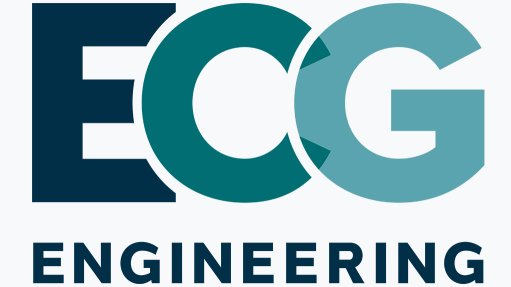Logistics Crisis Committee’s work to continue, freight sector poised to transform in next two years
Business Unity South Africa (Busa) president Mxolisi Mgojo says he is confident that work within the National Logistics Crisis Committee (NLCC) will continue as political parties grapple to form a coalition government post the national elections held at the end of May.
“We partner with the government of the day,” says Mgojo.
This sentiment was echoed by NLCC strategic adviser Irvin Naidoo, who told Engineering News & Mining Weekly that the committee’s work to improve South Africa’s logistics systems will continue, “until it is told otherwise”.
Naidoo and Mgojo spoke at the yearly Sapics conference, held in Cape Town last week.
Sapics is the professional body for supply chain managers in South Africa.
The NLCC was formed in 2023 to tackle South Africa’s ailing logistics system – rail, roads and ports – as a partnership between government, organised labour and business.
While ultimately seeking structural reform to improve the domestic logistics system’s global competitiveness, as guided by the Freight Logistics Roadmap (FLRM) – approved by Cabinet at the end of last year – the immediate goal has been to arrest the decline.
Naidoo said that South Africa’s logistics space was poised to transform “quite significantly over the next 12 to 24 months” as the competitive environment became stronger, more investment was crowded into the freight system, and more partnerships developed between the State and the private sector.
A key step currently under way was the establishment of a National Ports Authority as an independent subsidiary of parastatal Transnet, allowing it to better fulfil its functions of licensing port terminals, providing oversight, and facilitating investment into the port system, noted Naidoo.
Another step was the establishment of a separate infrastructure manager for rail.
One of the key aspects of the broader reform process was separating rail infrastructure from rail operations as part of the objective to improve the competitive environment, noted Naidoo.
That process was well advanced, as manifested in Transnet’s network statement, released in March.
“The network statement basically established the rules and mechanisms on how private operators would access the rail network,” said Naidoo.
Public comments on the statement were now closed, with these comments to be consolidated and recommendations to be made to the relevant Ministries.
An updated statement was anticipated by August, with applications for access to the available lines to open in September.
“We anticipate that the infrastructure manager will be established as a full division in Transnet by April 2025,” said Naidoo.
He added that the expectation was for third-party access to the network to start early next year.
In parallel to this, there was also a process to right-size the rail network, as it was found to be too big to be commercially viable.
Shrinking it would enable concentrating the available funds into “the right parts of the network”.
Naidoo said this right-sizing programme would afford interested parties the opportunity to indicate their interest in taking over surplus lines prior to their closure.
As for the proposed private-sector investment programme in South African ports, Naidoo believes the current court challenge from one of the unsuccessful bidders for the Durban Container Terminal should “give us a lot of lessons, so that we can start to accelerate more transactions within this portfolio”.
He also noted that the Economic Regulation of Transport Bill had concluded all the necessary consultative processes, and that it was awaiting Presidential sign-off.
What this Act would ultimately enable was the establishment of a single economic regulator for transport.
“One of the things that allows us to do is to . . . apply a regulatory lens along the supply chain, rather than just a single mode of transport, as is currently the case,” said Naidoo.
On the to-do list was developing an appropriate and sustainable subsidy framework for the domestic logistics network, to ensure it was funded in an “optimal way”, he added.
Article Enquiry
Email Article
Save Article
Feedback
To advertise email advertising@creamermedia.co.za or click here
Comments
Announcements
What's On
Subscribe to improve your user experience...
Option 1 (equivalent of R125 a month):
Receive a weekly copy of Creamer Media's Engineering News & Mining Weekly magazine
(print copy for those in South Africa and e-magazine for those outside of South Africa)
Receive daily email newsletters
Access to full search results
Access archive of magazine back copies
Access to Projects in Progress
Access to ONE Research Report of your choice in PDF format
Option 2 (equivalent of R375 a month):
All benefits from Option 1
PLUS
Access to Creamer Media's Research Channel Africa for ALL Research Reports, in PDF format, on various industrial and mining sectors
including Electricity; Water; Energy Transition; Hydrogen; Roads, Rail and Ports; Coal; Gold; Platinum; Battery Metals; etc.
Already a subscriber?
Forgotten your password?
Receive weekly copy of Creamer Media's Engineering News & Mining Weekly magazine (print copy for those in South Africa and e-magazine for those outside of South Africa)
➕
Recieve daily email newsletters
➕
Access to full search results
➕
Access archive of magazine back copies
➕
Access to Projects in Progress
➕
Access to ONE Research Report of your choice in PDF format
RESEARCH CHANNEL AFRICA
R4500 (equivalent of R375 a month)
SUBSCRIBEAll benefits from Option 1
➕
Access to Creamer Media's Research Channel Africa for ALL Research Reports on various industrial and mining sectors, in PDF format, including on:
Electricity
➕
Water
➕
Energy Transition
➕
Hydrogen
➕
Roads, Rail and Ports
➕
Coal
➕
Gold
➕
Platinum
➕
Battery Metals
➕
etc.
Receive all benefits from Option 1 or Option 2 delivered to numerous people at your company
➕
Multiple User names and Passwords for simultaneous log-ins
➕
Intranet integration access to all in your organisation














